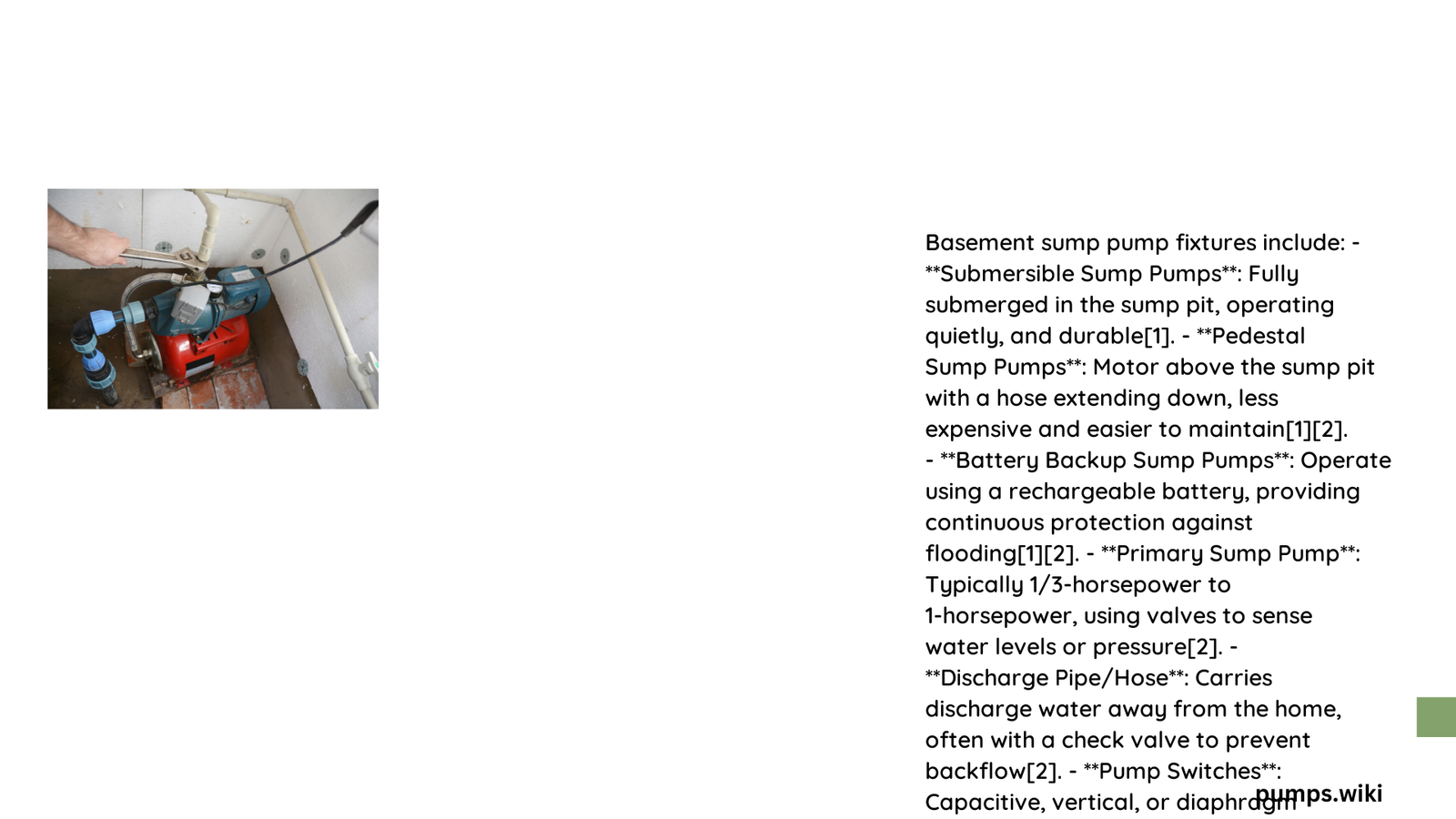Basement sump pump fixtures represent critical infrastructure for managing groundwater and preventing moisture-related damage in residential structures. These sophisticated systems efficiently remove accumulated water from basement areas, utilizing specialized pumps, basins, and drainage mechanisms to protect homes from potential flooding, structural deterioration, and mold growth. Understanding their technical specifications, installation requirements, and maintenance protocols is essential for homeowners seeking comprehensive water management solutions.
What Are Basement Sump Pump Fixtures?
Basement sump pump fixtures are comprehensive water management systems designed to collect, monitor, and redirect excess groundwater away from residential foundations. These intricate assemblies typically include:
- Sump Pit: Underground collection basin
- Submersible Pump: Water extraction mechanism
- Discharge Pipe: Water redirection conduit
- Float Switch: Automatic activation system
What Determines Sump Pump Performance?
Key Performance Metrics
| Metric | Range | Significance |
|---|---|---|
| Horsepower | 1/3 – 1 HP | Determines water extraction capacity |
| Vertical Lift | 7-30 feet | Indicates pumping height capability |
| Discharge Rate | 40-80 GPM | Measures water removal efficiency |
How Do Sump Pump Fixtures Operate?
Sump pump fixtures function through a systematic process:
- Water Collection: Groundwater enters the sump pit through:
- Perimeter drainage systems
- Natural soil seepage
-
Foundation wall moisture
-
Automatic Activation: Float switch triggers pump when water reaches predetermined level
-
Water Redirection: Pump expels water through discharge pipe away from foundation
What Are Critical Installation Considerations?
Essential Installation Requirements
- Pit Dimensions: 18-24 inches diameter
- Depth: Minimum 30 inches
- Location: Lowest basement point
- Drainage Slope: Minimum 2% gradient away from foundation
What Maintenance Protocols Ensure Longevity?
Recommended maintenance strategies include:
- Monthly Inspections:
- Check float switch functionality
- Verify discharge pipe clearance
-
Remove potential debris
-
Annual Professional Assessment:
- Comprehensive system evaluation
- Component performance testing
- Potential component replacement
What Backup Systems Enhance Reliability?
Backup sump pump fixtures provide critical redundancy:
- Battery-Powered Pumps
- Water-Powered Backup Systems
- Generators with Dedicated Circuits
Technical Specifications: Little Giant 6-Series Example
Core Specifications:
– Capacity: 46 GPM at 5 feet head
– Motor: 1/3 horsepower
– Electrical: 115V, 60 Hz
– Maximum Liquid Temperature: 140°F
– Discharge: 1-1/2″ female pipe thread
What Potential Challenges Might Homeowners Face?
Common sump pump fixture challenges include:
- Short cycling
- Electrical connection complexities
- Inadequate discharge management
- Potential float switch malfunction
Cost Considerations
Estimated Investment Range:
– Basic System: $200 – $500
– Professional Installation: $500 – $1,500
– Annual Maintenance: $100 – $300
Conclusion

Basement sump pump fixtures represent sophisticated water management technologies critical for protecting residential structures. Proper selection, installation, and maintenance ensure long-term foundation integrity and moisture control.
